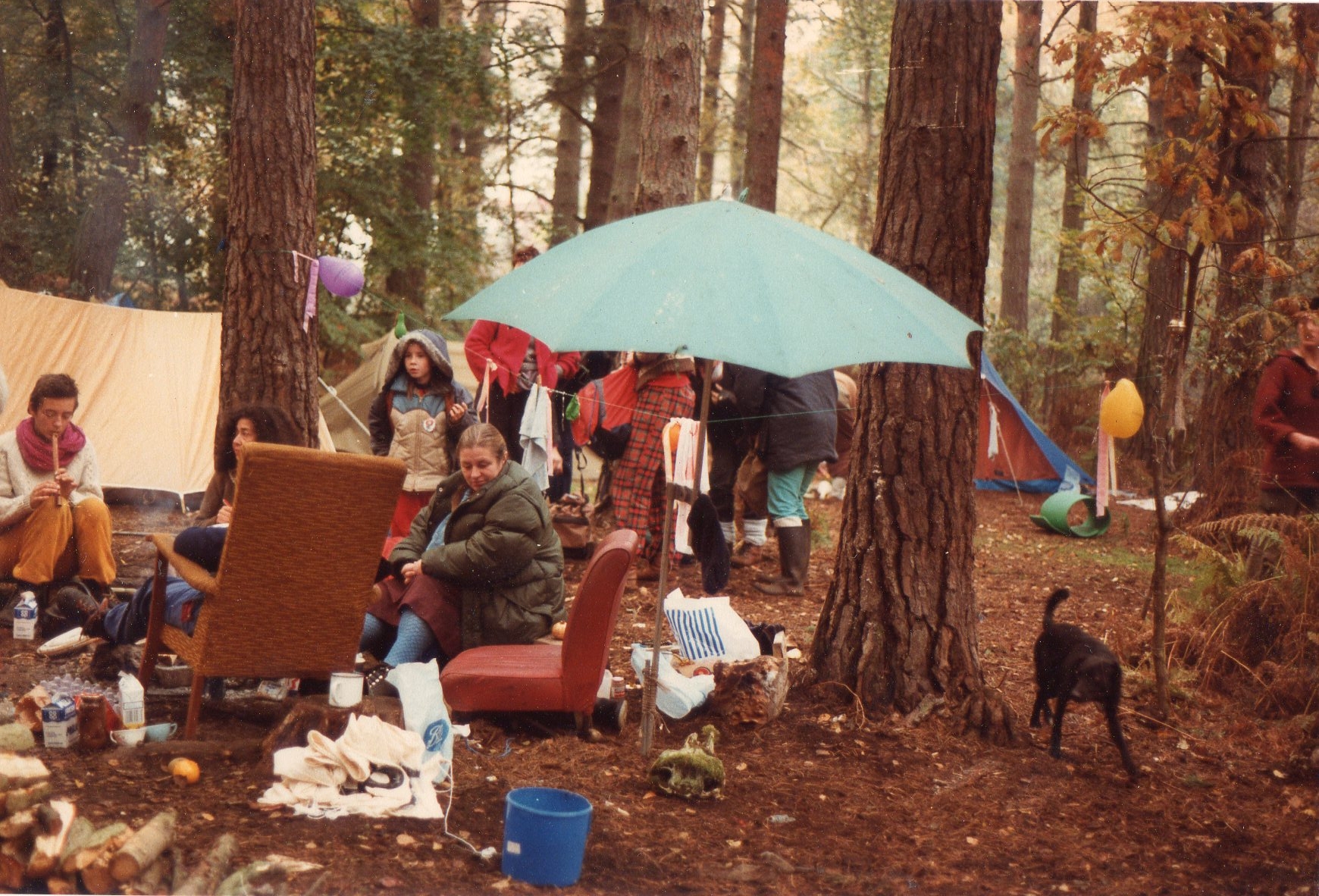Rebels with a cause: the protest legacy
of Greenham Common
FOR: PRETTYFACE
“Cars going past would either beep and drop off supplies, or drivers would shake their fists out of the window and swear. And they would sit there for hours, with all that going on, just chatting and singing,” says Rebecca Mordan, describing a protest movement she was part of. If you didn’t know better, you’d be forgiven for assuming Mordan is recalling an Extinction Rebellion event a few months ago – the organisation certainly invites this kind of love it/loathe it response. You’d be wrong, however, because the scenes she remembers have a very important place in the history books – and happened nearly 40 years ago.
In 1981, angered by a parliamentary decision to station cruise missiles at an RAF base in Greenham Common, Berkshire, a Welsh women’s rights group marched to the site to demand the government rethink its plans. Somewhat predictably they were ignored, so wasted no time in setting up a more permanent protest. The group established a camp – just outside the entrance of the base – from which to stage their disobedience, and just… stayed. For 20 years.
Well, not those exact women, obviously, but over its lifespan, the Greenham Common protest camp became an internationally renowned political force. “Greenham Common is an iconic example of sustained, long term activism and resistance,” says professor of environmental politics at the University of Manchester Dr Sherilyn MacGregor.

Image courtesy of Bridget Boudewijn
“At Greenham Common, feminism and peace were seen as totally interrelated,” explains Rebecca Mordan, founder of Greenham Women Everywhere, an archive and arts organisation. “It was a rejection of the way that men were running the world.” Mordan spent large chunks of her childhood at the camp. “My mum used to take me – Greenham made complete sense to her,” she explains. “But she was there because she was frightened. In the same way that young people now are viscerally afraid of climate change, she went to Greenham because of the bomb.
“It was really about so much more than that, though, and that’s what she realised after she spent time there. It was an amazing melting pot where they worked everything out – how sexuality, race and class intersect with being a woman. It was mind-blowing.”
‘What does feminism have to do with the environment?!’ the Piers Morgans of this world scream. Well, it turns out quite a lot, actually. “The exploitation of women and the exploitation of the planet are very much coming from the same structures,” says Dr MacGregor. “It’s in capitalism where this fundamental exploitation exists.” Dr MacGregor explains that, for example, efforts to limit population growth in order to slow the climate crisis may endanger reproductive rights. “We could really risk intensifying the problem,” she says.
Youth climate activist Freya Freeman-Taylor believes we should also add peace to conversations around climate and gender. “It’s important to make sure people don’t think that wars are justified if they tackle overpopulation,” she explains. “Some people think that, if we have conflict, there’ll be fewer people as a result, and therefore fewer carbon footprints. That’s incredibly damaging. Capitalism causes climate change, not overpopulation.”
So why should we still be talking about Greenham Common? Since the camp disbanded, environmentalists’ focus has shifted away from nuclear weapons, and firmly in the direction of the climate crisis, with the likes of Extinction Rebellion. Although the two movements aren’t directly tackling the same issues, it’s clear that today’s activists have a lot to learn from protest herstory. “As feminists, the history we live isn’t recorded,” says social historian Amy Todd, “so every generation has to re-learn feminism.”




Images courtesy of Bridget Boudewijn and Sandie Hicks
Rebecca Mordan agrees. “As a culture, we actively erase women’s history, and every time we do this, younger activists have to reinvent the wheel. They’re not standing on the shoulders of giants like they should be. I am more convinced then ever that the legacy of Greenham Common is relevant now,” she says.
According to photographer and XR Youth co-ordinator Talia Woodin, climate activists today do take note of their predecessors. “There are a huge number of tactics that have been carried through – a very clear set of techniques and tools that are really effective.” In fact, ex-Greenham Common protestors play a key role in teaching non-violent direct action tactics at Extinction Rebellion camps – like allowing your body to go floppy and heavy when arrested. But there’s an important difference. “They didn’t have mobile phones,” says Woodin. “I don’t know how we’d do what we do without social media.”
With 2021 marking 40 years since the foundation of the Greenham Common camp, we’ve got the potential to build on its protest legacy. And, according to Amy Todd, if Greenham teaches us anything, it’s that you’ll be appreciated… eventually.
“If you’re an activist, you’re never praised within your lifetime for the work you do. At the time, you’re a troublemaker, you’re always getting in people’s way. But afterwards, when the impact starts to show, people will look back on you and think: wow, they were amazing.” ︎